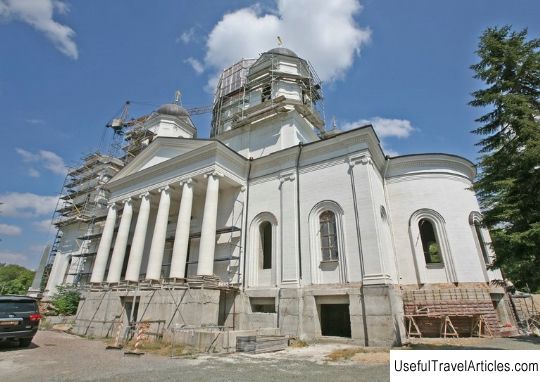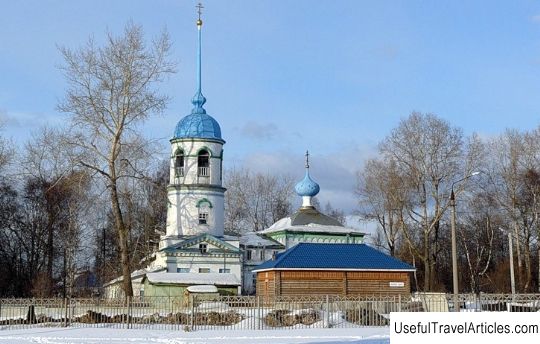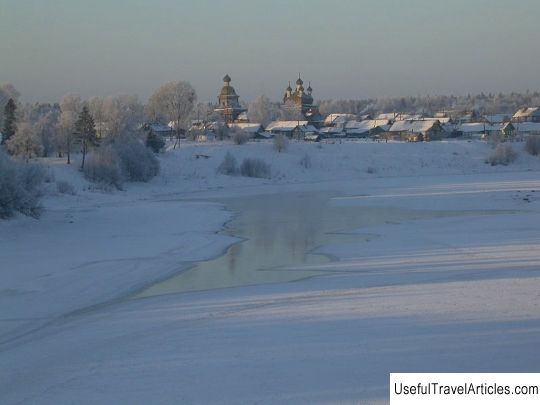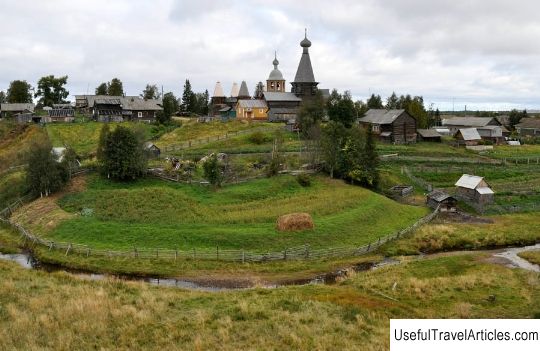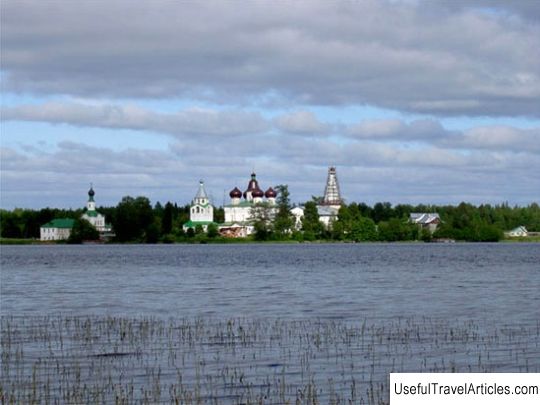Kholmogorsk cathedral ensemble description and photos - Russia - North-West: Arkhangelsk region
Rating: 7,6/10 (600 votes) 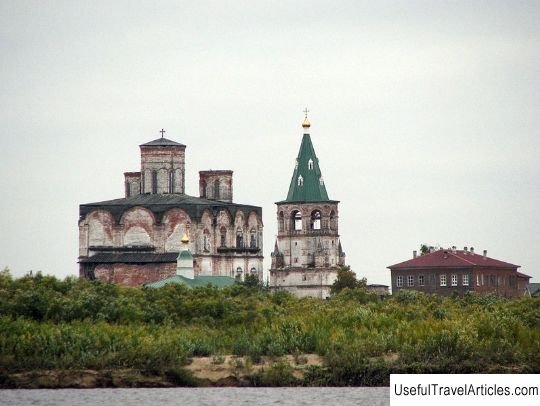
Kholmogorsk cathedral ensemble description and photos - Russia - North-West: Arkhangelsk region. Detailed information about the attraction. Description, photos and a map showing the nearest significant objects. Photo and descriptionThe Kholmogorsk cathedral ensemble is located in the village of the same name and in the region of the Arkhangelsk region. It consists of the Transfiguration Cathedral, the bell tower and the Bishops' chambers. The Orthodox Transfiguration Cathedral was erected in 1685-1691 by Archbishop Athanasius. The foundation was laid in May 1685. Fyodor and Ivan Stafurov supervised the construction work of the "stone and bell works of the apprentice". The cathedral was built like other northern churches of the late 17th century; it received a severe medieval image. The building was crowned with 5 powerful heads. Its height was 42 meters. The architects of those years no longer used pet coat; Kholmogory Cathedral had a developed cornice with a 4-pitched roof. The decorative design of facades is distinguished by simplicity and modesty: promising portals, stripes of curb and croutons, a kind of platband pattern. Be that as it may, structurally the building of the cathedral has retained many archaic elements that go back to the Assumption Cathedral of Fioravanti: the cross vaults are on the same level, the inter-altar double arches and compartments are practically equal to each other. The temple was painted by local Archpriest Fyodor and Deacon Fyodor. After Tsar Peter Alekseevich visited the cathedral in 1693, the iconostasis was replaced with a five-tiered one. The cornice with the temple-created chronicle was located between the second and third tiers of the iconostasis. Through the efforts of His Grace Athanasius, a diocesan archive was formed at the church, and a telescope was installed on the bell tower. The cathedral was the first observatory in the Russian North. Later, the cathedral served as a burial vault for bishops, and directly opposite the Braunschweig family was imprisoned. After 1920, the monument was ravaged and practically destroyed. Of the five drums, only three managed to survive, and then they were beheaded. The entire height of the temple was overtaken by a crack, clearly visible in the photographs, which threatened its complete destruction. In the second half of the XX century, instead of restoration, the Transfiguration Cathedral was mothballed for an indefinite period, the walls were fastened with metal ties, although the bell tower was restored. Today the cathedral is open as a parish church, but the local population does not have enough funds for restoration work. Services are held in two smaller churches of a later construction located near the cathedral: the Twelve Apostles and the Descent of the Holy Spirit. To the west of the Transfiguration Cathedral there is a low tent-roofed bell tower, built in 1683-1685 (in other sources - in 1681-1683). It was with her that the construction of the entire Bishops' court began, and she appeared before the cathedral, which violated all church canons. The structure of the bell tower is traditional: an octagon on a four, completing the structure of a tent. Thanks to its rich decor, it seems to withstand the austere appearance of the cathedral. The bell facades, like the cathedral ones, were painted with "patterned pink colors." There was a clock on the bell tower, which had 2 wooden circles with arrows “on the osmerik from north to south”: on the south - there were Latin numbers, on the north - Russian. There are 14 bells on the bell tower. A large one (weighing 178 pounds) was cast during the reign of Catherine II, the other (110 pounds) was originally from Amsterdam. In Soviet times, these bells were melted down, but part of the found bell was used for casting new ones. The Bishops' Chambers were built in 1688-1691. In the line of the Holy Gates, from the eastern direction of the chambers, there was the archbishop's house church (1692-1695). A dining room and a cross chambers with “grass” vaults and tiled stoves were attached to it at the level of the second floor. Once, the Bishops' Chambers looked very elegant: a high roof with chimney boxes, luxurious window frames, each of which is decorated with kokoshniks with 3 “peaks”. The front porch led to the second floor. In these chambers in 1693, Peter the Great was received by Archbishop Athanasius.     We also recommend reading Verona amphitheater (Arena di Verona) description and photos - Italy: Verona Topic: Kholmogorsk cathedral ensemble description and photos - Russia - North-West: Arkhangelsk region. |
